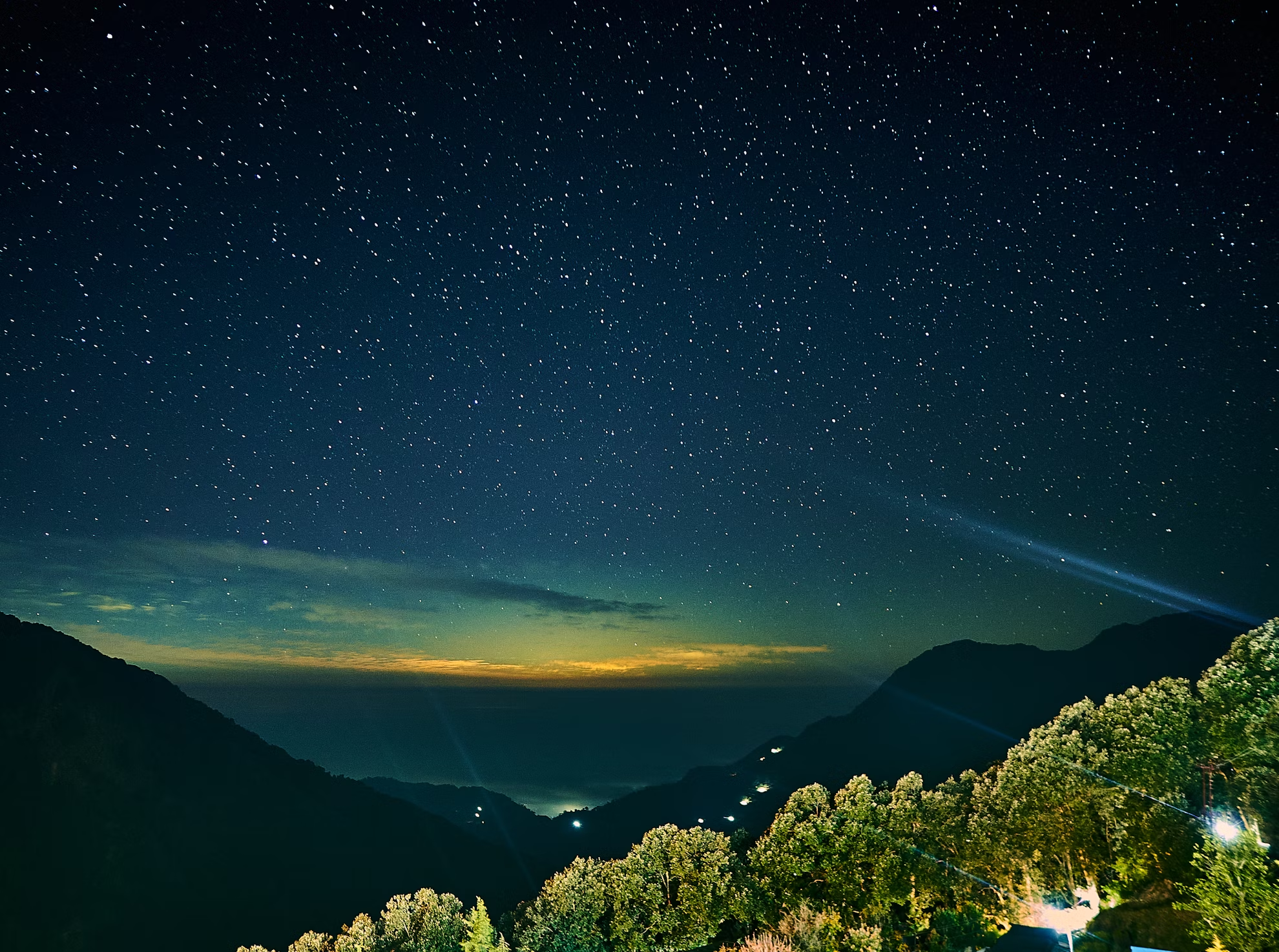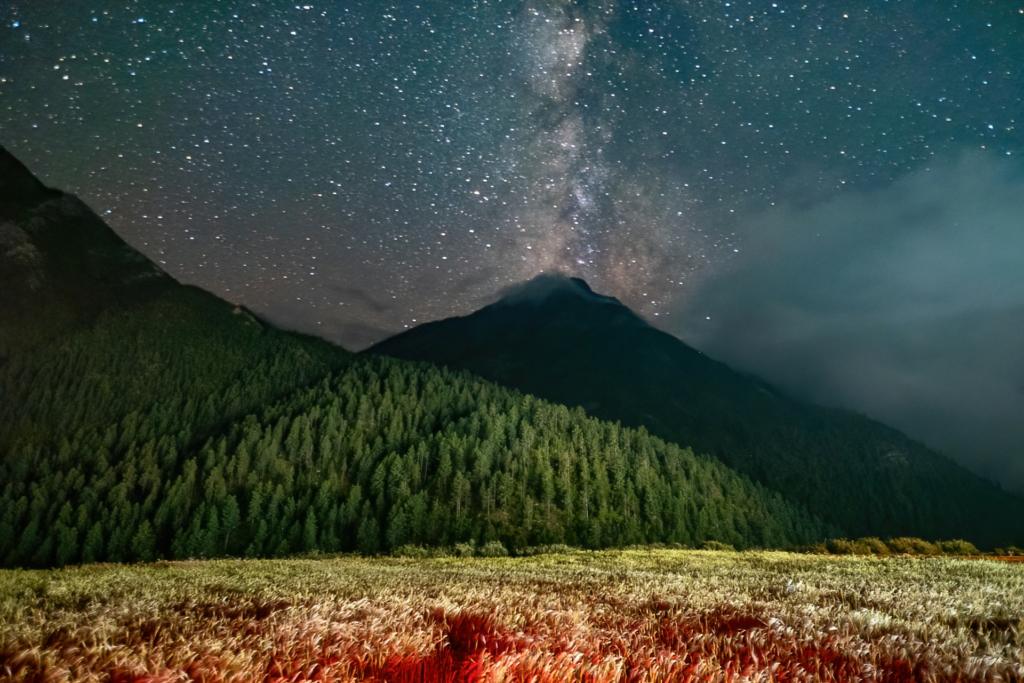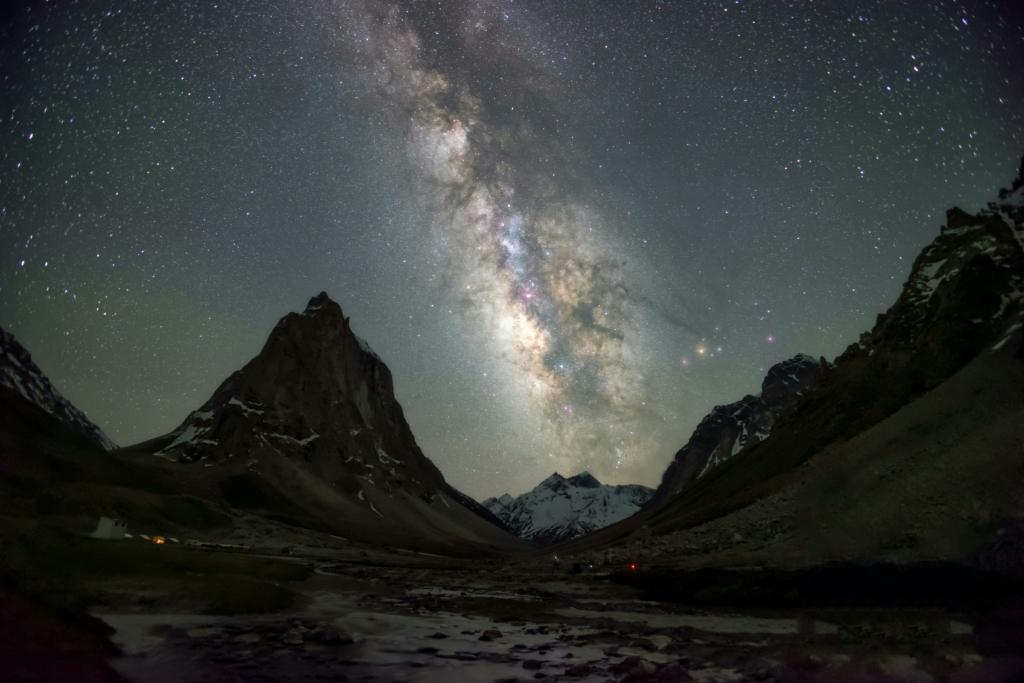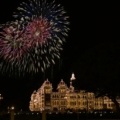Astro-Tourism in India: Best Places for Stargazing during the Monsoon

Astro-tourism is gaining ground in India, especially among travellers seeking something beyond the typical monsoon retreats. While the monsoon season often conjures up images of rain-drenched hills and mist-covered forests, it also offers the rare magic of a clear night sky after a downpour. Between the passing clouds and emerging constellations, India’s diverse geography reveals some surprisingly good opportunities for stargazing during the monsoon months.
Whether you’re an amateur astronomer or someone who enjoys the silence of the night skies dotted with stars and planets, these locations offer the perfect mix of accessibility, low light pollution, and stunning landscapes. Here are five of the best places in India for astro-tourism this monsoon, each offering a unique window into the cosmos.
In this Blog
1. Malshej Ghat, Maharashtra
Malshej Ghat is known for its rugged cliffs, seasonal waterfalls, and monsoon treks. But beyond the rains and greenery, it offers a relatively undiscovered night sky experience for those willing to wait for the clouds to clear.
Located just a few hours from Mumbai and Pune, Malshej Ghat’s elevation and low population density contribute to a darker sky ideal for stargazing during the monsoon. The best time to observe the stars is often just after a fresh spell of rain when the sky begins to clear. On a good night, the Milky Way becomes visible, and constellations like Orion and Scorpius are easy to spot.
Malshej Ghat is also home to a few eco-lodges, which have increasingly started offering guided night sky experience or stay at villas near Malshej an amazing experience. The surrounding Harishchandragad and Ajoba hills form a dramatic silhouette against the stars, making it a good spot for night photography as well.
Tips: Choose weekdays over weekends to avoid light pollution from tourist traffic. Carry a star chart or download a sky-watching app for best results.
2. Spiti Valley, Himachal Pradesh

Spiti Valley is a bucket-list destination for astro-tourism enthusiasts. While much of India battles cloudy skies during the monsoon, Spiti remains largely rain-shadowed, offering clearer skies even in July and August.
At over 12,000 feet above sea level, the valley’s dry air, minimal pollution, and lack of artificial lighting make it one of the darkest regions in the country. Kaza, Dhankar, and Langza are particularly favorable for night sky observations. Langza, often called the “fossil village,” is also home to some of the highest inhabited spots in the region, making it a favorite for Astro photographers exploring stargazing in Spiti Valley.
Spiti’s clear skies allow for uninterrupted views of deep-sky objects, star clusters, galaxies, and even meteor showers if the timing is right. Local homestays and even a few cottages near Spiti Valley have begun offering telescopes, and some host astronomy nights during the summer months. For anyone interested in star gazing in Himachal, Spiti offers one of the most dependable skies during the monsoon.
Tips: Acclimatize before ascending to high altitudes.
3. Hanle, Ladakh (UT of Ladakh)

For serious stargazers, Hanle in Ladakh is the gold standard. Home to the Indian Astronomical Observatory, one of the world’s highest observatories, Hanle offers some of the most unobstructed and consistently clear night skies in the country.
Situated at over 14,700 feet, Hanle’s dry atmosphere, high altitude, and remoteness make it ideal for astro-tourism. July is a relatively dry period in this region, compared to the heavy rains in other parts of India. The absence of light pollution allows for pristine views of the Milky Way, Saturn’s rings (through a telescope), and deep-sky objects, making Hanle stargazing a bucket-list experience for enthusiasts.
The observatory is not open for public stargazing sessions, but many homestays and cottages in Ladakh now offer guided night sky experiences using high-quality telescopes. Some Ladakhi guides also narrate local myths associated with constellations, adding a cultural layer to the experience. If you’re exploring Ladakh stargazing spots this monsoon, Hanle easily ranks among the best.
Tips: Hanle is in a restricted zone, so Indian travellers require an Inner Line Permit. Weather can be unpredictable; pack accordingly for cold nights.
4. Coorg, Karnataka
Coorg, often known for its coffee estates and rolling hills, has also emerged as a surprisingly good spot for monsoon stargazing. While cloud cover can be an issue, there are still clear nights between spells of rain, especially in the earlier half of the season.
Several areas around Madikeri and Somwarpet offer clearings and elevated locations away from artificial lights. The wide coffee plantations act as natural buffers against light pollution, and some estate stays now host sessions for stargazing in Coorg. During the monsoon, the cool air and occasional mist create a surreal backdrop when the sky begins to clear, and stars begin to peek through.
What sets Coorg apart is the mix of accessibility and immersive experiences. It may not be the darkest sky location on this list, but it provides an ideal setting for casual stargazers and families looking to combine astronomy with nature.
Tips: Check weather forecasts before planning a stargazing during the monsoon at night. Homestays in Coorg with open terraces or hilltop views offer better chances of catching a clear sky.
5. Yercaud, Tamil Nadu
Tucked into the Shevaroy Hills, Yercaud offers cooler climes and relative seclusion from city lights, making it a viable spot for stargazing during the monsoon. While not as high-altitude as some northern destinations, Yercaud benefits from its hill station status and relatively stable weather during early monsoon months.
The area around Pagoda Point and Lady’s Seat are two of the best public spots for an open sky view. With fewer tourists during the off-season, the surroundings become even quieter, which is ideal for night sky observation. Some homestays in Yercaud have started investing in small telescopes and often encourage guests to stargaze from their open lawns or balconies.
Local amateur astronomy groups sometimes organize star parties in Salem district or Yercaud itself, especially during celestial events like meteor showers or lunar eclipses. The relatively dry spells in late July and early August make this period especially favourable.
Tips: Avoid areas near the town centre to reduce light interference. Carry binoculars if you don’t have access to a telescope.
Planning Your Astro-Tourism Trip This Monsoon
While stargazing during the monsoon might seem counterintuitive, the key lies in timing and location. Many high-altitude or rain-shadow regions in India experience clearer skies even during July and August. Others have short windows between showers when visibility improves significantly. Here are a few general pointers to keep in mind:
- Check moon phases: New moon nights offer the darkest skies for observing fainter stars and celestial bodies.
- Use astronomy apps: Tools like Sky Map, Stellarium, or SkySafari can help you identify constellations, planets, and even satellites.
- Avoid weekends: Lesser crowds mean lower light pollution, especially in semi-popular locations like Malshej Ghat and Coorg.
- Dress for the weather: Even during summer, high-altitude regions like Hanle and Spiti can get extremely cold at night.
Monsoon Skies, Cosmic Vibes
Astro-tourism in India is no longer limited to deserts or winter skies. With a little planning and the right destination, even the monsoon can offer clear, star-filled nights worth travelling for. Whether it’s the isolated brilliance of Hanle, the high-altitude clarity of Spiti, or the occasional surprises in Coorg and Yercaud, there’s a growing set of opportunities for travellers to look up and reconnect with the universe, one star at a time.
Banner Image Credit: Ashwini Chaudhary(Monty) via Unsplash
Also Read:
Where to Travel for Stargazing in India This May and June 2025
5 Best Places to Visit Near Mumbai in July
Ziplining in Munnar in Monsoon: Soaring Over Tea Estates & Waterfalls
Andharban Jungle Trek: Ultimate Monsoon Trekking Guide
24 Best Places to Visit in South India in July and August: Monsoon Destinations (2025)





